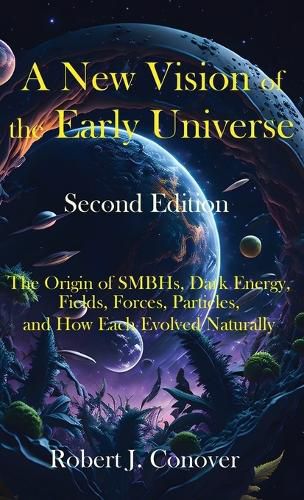Readings Newsletter
Become a Readings Member to make your shopping experience even easier.
Sign in or sign up for free!
You’re not far away from qualifying for FREE standard shipping within Australia
You’ve qualified for FREE standard shipping within Australia
The cart is loading…






This title is printed to order. This book may have been self-published. If so, we cannot guarantee the quality of the content. In the main most books will have gone through the editing process however some may not. We therefore suggest that you be aware of this before ordering this book. If in doubt check either the author or publisher’s details as we are unable to accept any returns unless they are faulty. Please contact us if you have any questions.
The current theory for the early universe centers around the Standard Model's vision of fields, forces, and particles inexplicably popping into existence within the first second of the Big Bang. That conjecture has worked for many years and has inspired an edifice of theoretical support, but it stretches credulity and leaves too many unanswered questions. What if the initial nugget of energy did not instantaneously turn into particles but was left to expand and lose density? As it thinned, isolated density fluctuations would swirl and grow by accretion, eventually creating thick-density supermassive blackholes, light-density particles, and a thin-density medium of dark energy. The support for this seemingly wild hypothesis is in the observational evidence demonstrating that everything we know of in the universe, including fields, forces, matter, and time, naturally evolves from relationships between those three energy densities. This is the story of those relationships. That profound realization comes through in the Second Edition of A New Vision of the Early Universe. It's the culmina-tion of forty years of research and study by the author, Robert J. Conover. The depth of his research, attention to detail, clear prose, and philosophical approach to analyzing difficult issues conspire to make this a well-respected treatise. The work is supported by numerous citations, quotes, and observations from many leading physicists, cosmologists, and mathemati-cians.
$9.00 standard shipping within Australia
FREE standard shipping within Australia for orders over $100.00
Express & International shipping calculated at checkout
This title is printed to order. This book may have been self-published. If so, we cannot guarantee the quality of the content. In the main most books will have gone through the editing process however some may not. We therefore suggest that you be aware of this before ordering this book. If in doubt check either the author or publisher’s details as we are unable to accept any returns unless they are faulty. Please contact us if you have any questions.
The current theory for the early universe centers around the Standard Model's vision of fields, forces, and particles inexplicably popping into existence within the first second of the Big Bang. That conjecture has worked for many years and has inspired an edifice of theoretical support, but it stretches credulity and leaves too many unanswered questions. What if the initial nugget of energy did not instantaneously turn into particles but was left to expand and lose density? As it thinned, isolated density fluctuations would swirl and grow by accretion, eventually creating thick-density supermassive blackholes, light-density particles, and a thin-density medium of dark energy. The support for this seemingly wild hypothesis is in the observational evidence demonstrating that everything we know of in the universe, including fields, forces, matter, and time, naturally evolves from relationships between those three energy densities. This is the story of those relationships. That profound realization comes through in the Second Edition of A New Vision of the Early Universe. It's the culmina-tion of forty years of research and study by the author, Robert J. Conover. The depth of his research, attention to detail, clear prose, and philosophical approach to analyzing difficult issues conspire to make this a well-respected treatise. The work is supported by numerous citations, quotes, and observations from many leading physicists, cosmologists, and mathemati-cians.